Robotic Clay: Students push limits on wall for Canadian Clay and Glass Gallery show
February 22, 2023
Students at the Carleton University architecture school are designing and building a 3D-printed ceramic wall that is aesthetically intriguing, structurally sound, and uses less material than typical construction for an exhibition at the Canadian Clay and Glass Gallery.
“The project is complex and challenging, and the students are embracing this and finding incredibly creative and technologically advanced ways of thinking about a wall,” says Associate Professor Sheryl Boyle. “We are working at the scale of a model, but really we are thinking about buildings.”
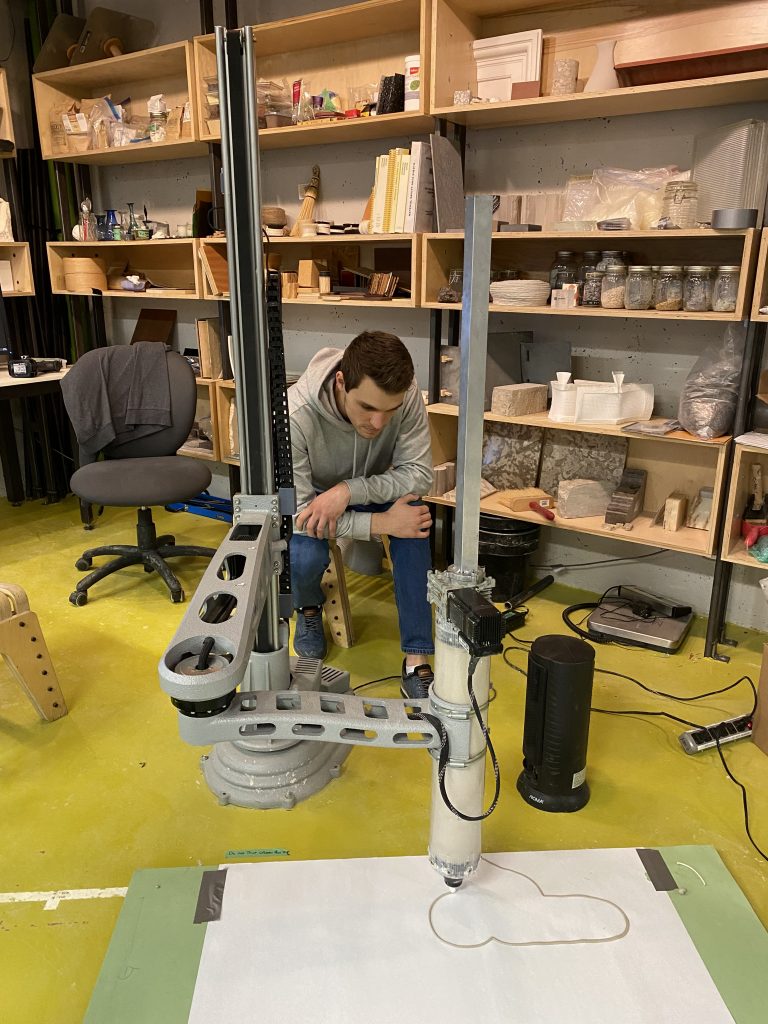
“Being part of this team and this project has prompted me to follow my passion for the world of 3D printing,” says Catalin Bacalu.

“Diggings in the garden bed on the lower level of the school of architecture building exposed the layers of dirt accumulated on this humble patch of soil,” says Ju Huang. “Through the crafts of ceramics and printing, the soil vitrifies as a slice of time becoming 10cmx10cm interior wall tiles.”
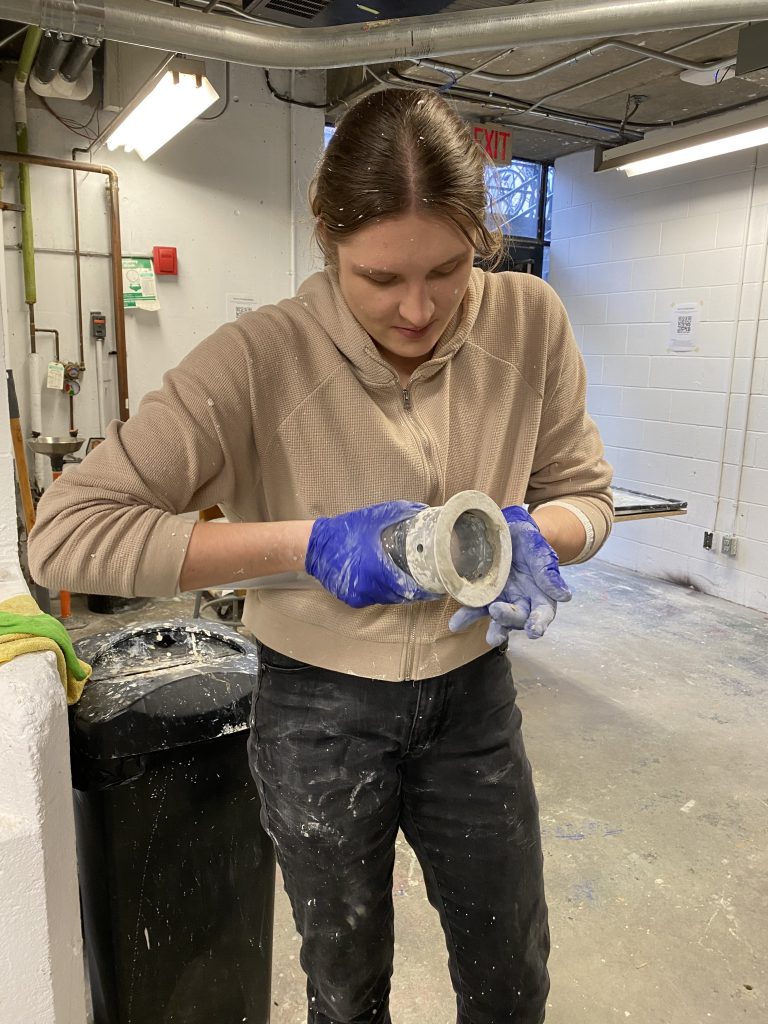
“I am used to thinking about architectural projects at the scale of a building, but it has been really refreshing to work on a project at a smaller, more hands-on scale,” says Meaghan Dickson. “It has been extremely interesting to me to bridge the gap between digital craft and hands-on craft.”
Dr. Boyle is the director of the Carleton Sensory Architecture and Liminal Technologies Laboratory (CSALT), where the work is taking place. CSALT researches materials and fabrication methods that have implications for new ways to design and assemble buildings.
For this project, she explains, students use clay as an analogous material to concrete. “The research is aimed at using less concrete in buildings because concrete has a huge carbon footprint.”
The CSALT team’s proposal was selected for an exhibition at the Canadian Clay and Glass Gallery in Waterloo, ON, called Robotic Clay: New Methods in Architectural Ceramics, which runs from June 1 to September 10, The opening reception will take place on June 4 at 2,00 p.m.
The exhibition is organized and curated by David Correa, Isabel Ochoa, and James Clarke-Hicks. It is supported by the Masonry Council of Ontario in partnership with the University of Waterloo School of Architecture and the Canadian Clay & Glass Gallery.
It brings together work from academic institutions across North America, including at least nine teams from the following schools: Carleton University, University of Toronto, Dalhousie University, Laurentian University, the University at Buffalo, and University of Waterloo.
“Combining traditional ceramic craft and robotic fabrication, the exhibition will explore how attuning emergent technologies to the unique properties of clay can create new form and spatial languages,” say the organizers.
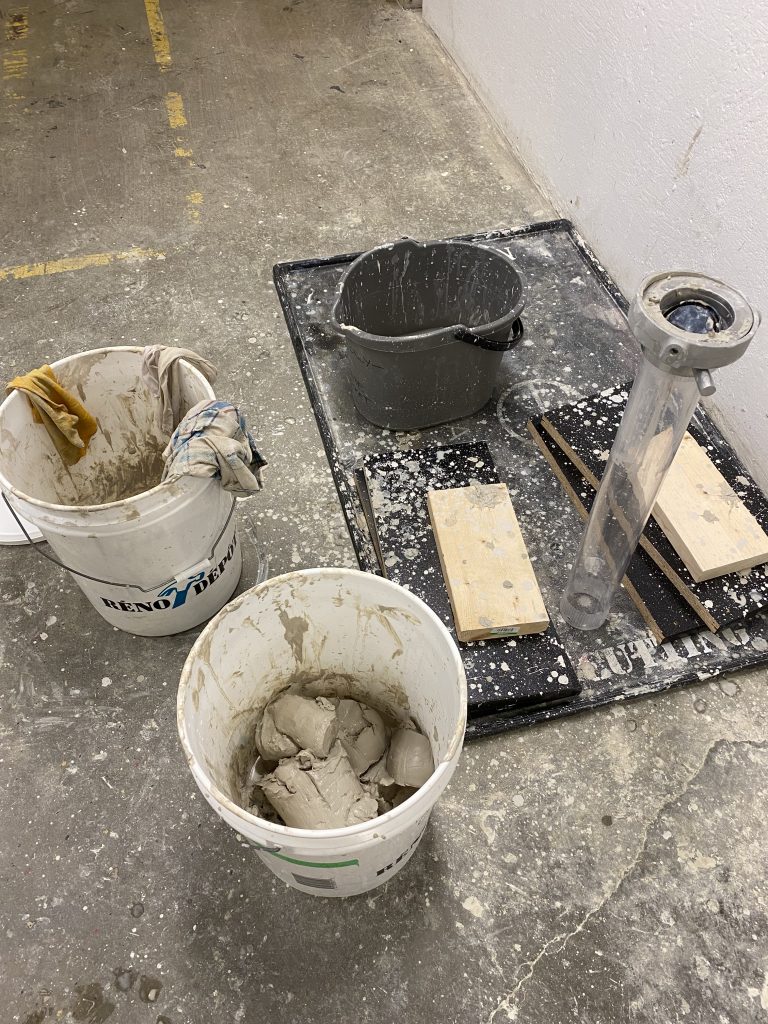
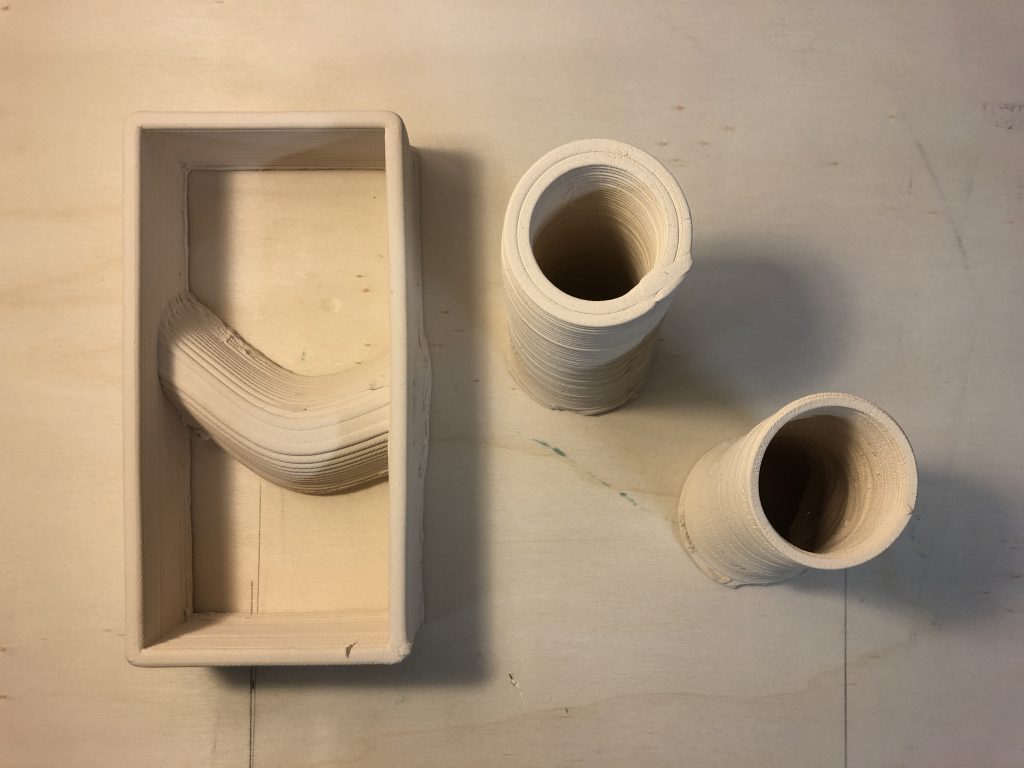
The CSALT workshops include a ceramics kiln, a robotic arm, pug mills, and cylindrical tubes to make clay molds for architectural casting.
The exhibition brief asks contributors to design and make a prototype section of a wall one-metre by one-metre square and 200 millimetres thick.
For the Carleton students developing the project, it has required learning everything from the physical assembly of masonry with mortar to how to derive the one-dimensional instruction codes needed by three-dimensional printing from two-dimensional digital drawings.
The result is a prototype for collaboration as well as for a wall. A group of eight students has shared their knowledge and work, assisted by a grant from the Canadian Precast Prestressed Concrete Institute (CPCI).
Fourth-year undergraduate students Meaghan Dickson, Adonis Lau, and Catalin Bacalu and graduate student Ju Huang are leading the project, with support from third-year students Shela Lamug, George Gialouris-Tsivikas, and Slade Solomon. Stephanie Murray, a Master of Architectural Studies student with expertise in ceramics, is helping with firing and assembly.

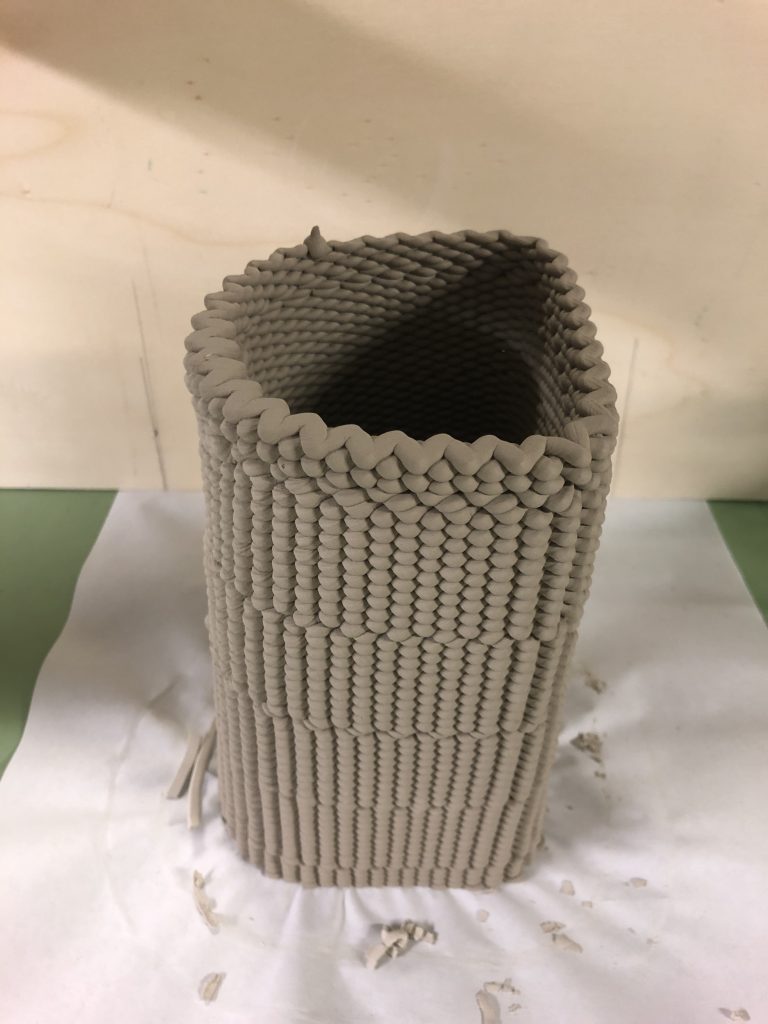

Given the unique form of the clay structure, developing a printing strategy that successfully printed the components in a seamless manner required a lot of testing.
“Support from CPCI allowed Meaghan, Adonis, Catalin, and Ju the opportunity to invest the required time into the clay wall project, to push the wall to creative limits, and stay on track for the May submission deadline,” says Boyle.
Their project creates a wall where the bricks no longer take the load but have become decorative, using two structural systems working in unison.
This first system pays homage to the form and assembly of a brick wall, consisting of modular blocks positioned in a staggered layout.
The second offers support through a series of internal “branches” using a topology optimization software called tOpos, which Boyle says can contribute to using fewer of the world’s resources. “When we put structure only where it needs to do the task, it means we use less material to hold stuff up.”
The project started in October. Having designed a digital model, the students are now printing 110 bricks and 16 structural pieces, drying, and firing them to prepare for assembly. The hollow modular blocks will be assembled with lime mortar.

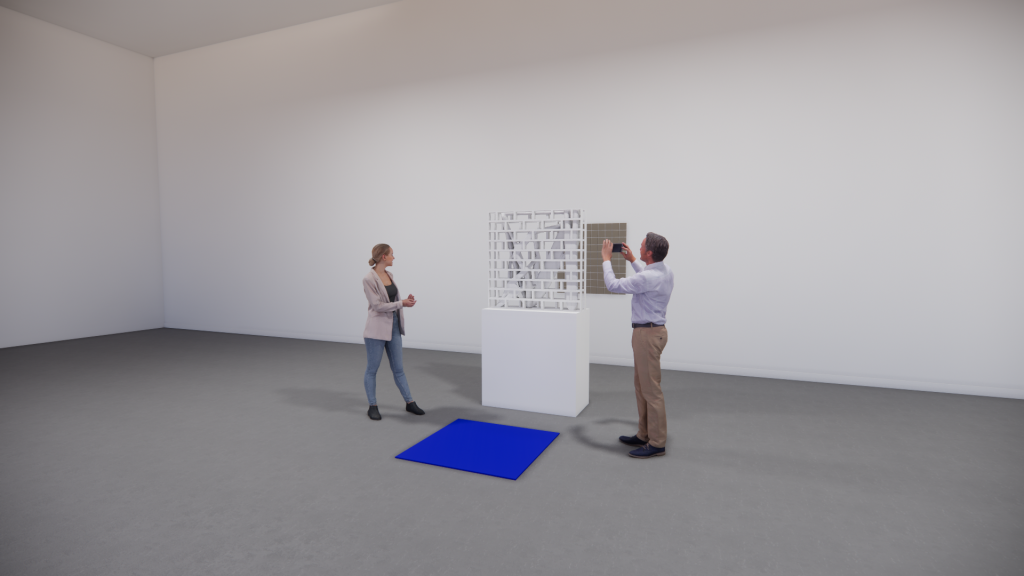
The wall provides a spatial framework to investigate form-making, functional applications, and material properties.
“The students are learning digital and analog processes of making and how these two aspects can come together in meaningful ways,” says Boyle.
Learning through experimentation and iterative design are an integral aspect of CSALT, which occupies a suite of rooms in the basement of the Architecture Building. Students have a long room with desks and computers for their research, plus small workshops lined with materials and equipped with tools for experiments and making prototypes.
A one-armed robot named Lucie stands in the middle of the Materials Reference Room, keeping company with plastic buckets of clay and a wall-mounted clay extruder. The Hot Room contains an electric kiln for firing the clay and a kneading machine, or pug mill, fed by tubes of clay and nicknamed Puggie.
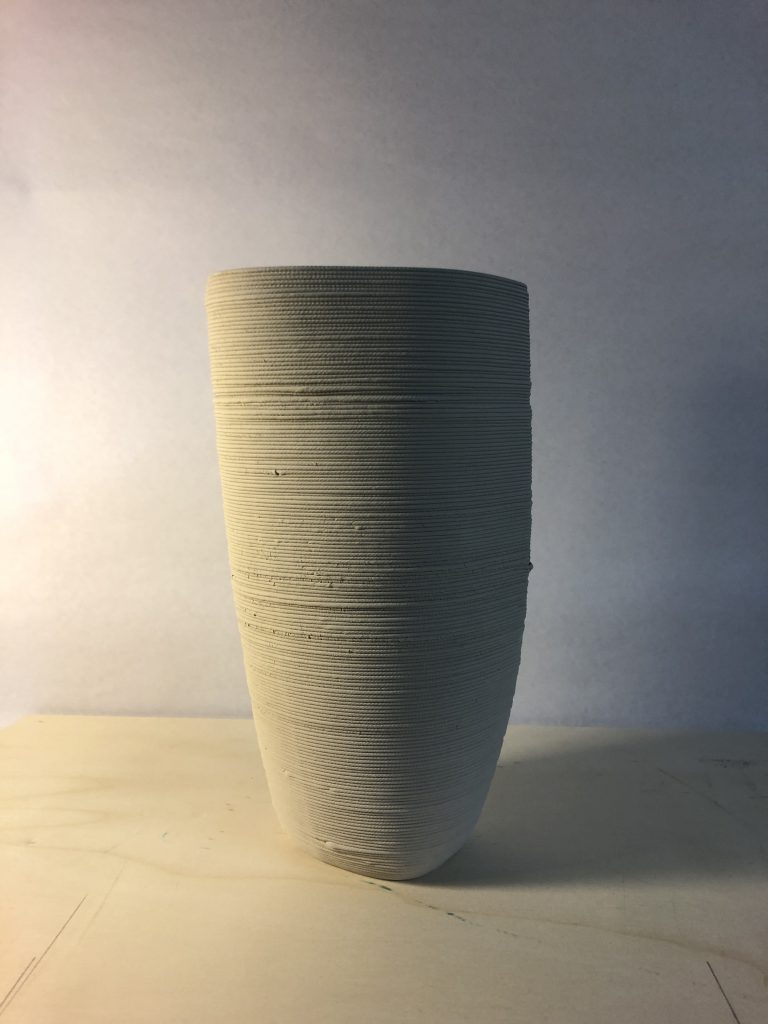
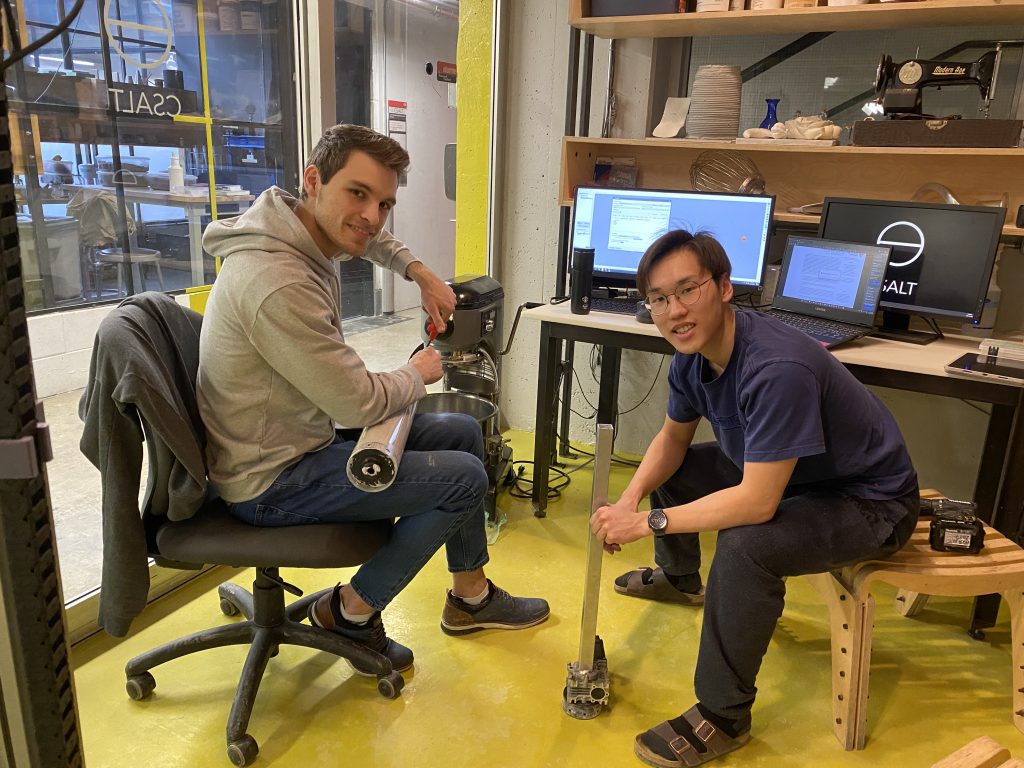
“Learning about the physics behind the structural and material optimization has provoked lots of further questions I want to research and explore further,” says Adonis Lau (right), who has helped lead the project’s digital fabrication.
“It has been a learning curve to think through the lens of creating with the tools available to us and not just in digital space,” says student Meaghan Dickson. “Learning about fabrication has encompassed learning how to use the 3D printer, the CNC machine, digital software, and the kiln.”
In addition to the wall, their installation has two smaller secondary components that reference process work: a ceramic floor mat and a textured free-standing wall made of tiles.
The mat will be carved with a digital drawing, or G-code, of numbers and lines representing the path of the 3D printing nozzle. The clay for the wall tiles emerges from decades of accumulated dirt in a garden bed at the Architecture Building. “My process is a sensory and poetic indulgence disguised as a scientific experiment,” writes Ju Huang, who is making the tile wall for her master’s thesis.
“The group is producing some really intriguing research,” says Boyle. “The CSALT lab is coming to life because of their rigour and experimentation.”